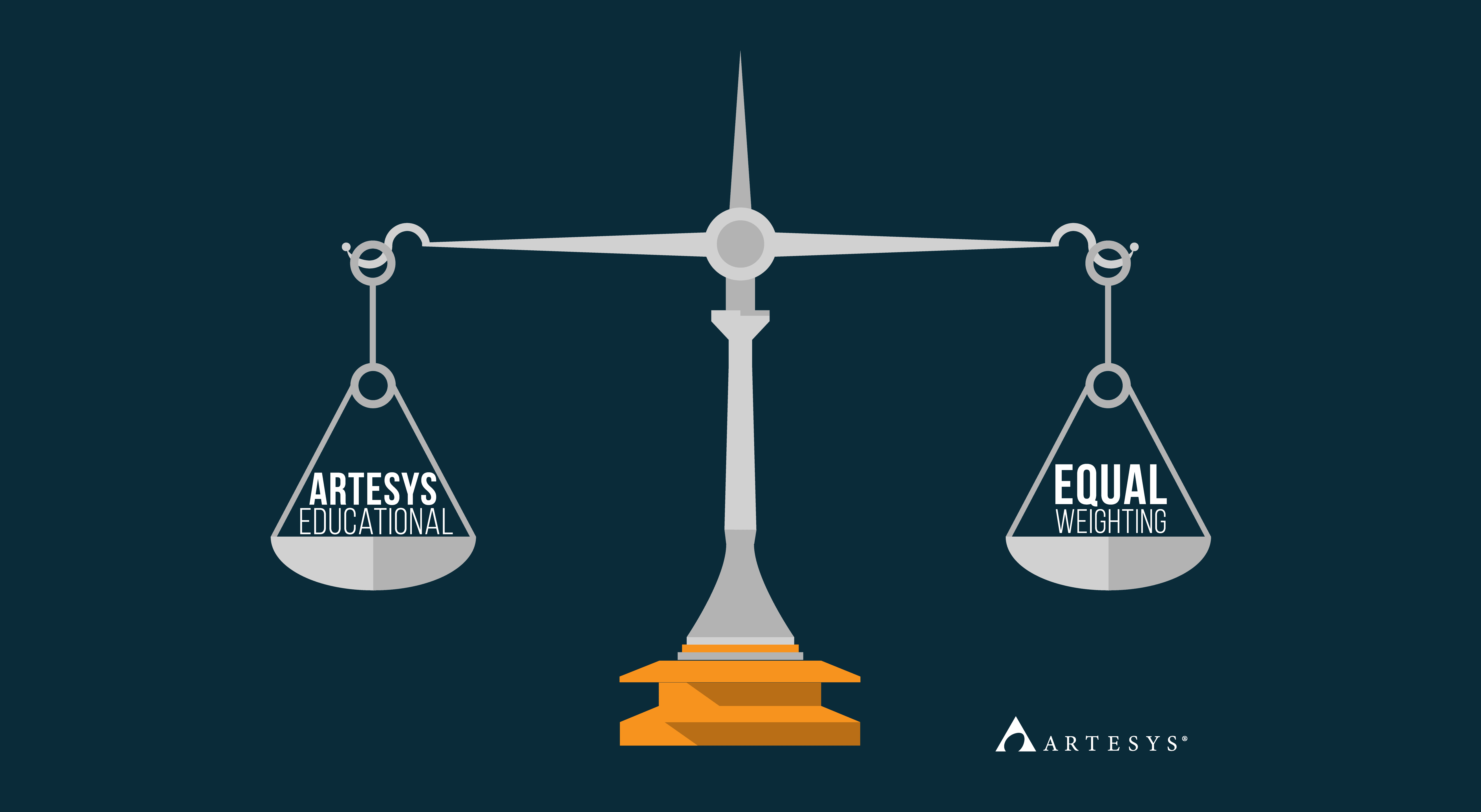Weighing your Options Appropriately

In June, we learned from our experiment that historical return is not a good predictor of future performance and that chasing after returns, year after year, can be detrimental to your account’s value. If you didn’t get a chance to read it, you can find it here.
This month, we’ll talk about a common method of selecting investments that we’ll refer to as “1/N Investing.” This is when you allocate 1/N percent to N investment options or, “Equal weighting.”
Example: when N = 4 we have an allocation of 1/N = 0.25 (25%) to each.
Would you be better off by following the 1/N criteria? Mathematically, you would expect to earn the average of the returns of all N investment options. So, you won’t expect to shoot the lights out, but you won’t be the worst performing either. This is very simple and easy to do, it hardly requires any thought at all, which may be why it remains such a popular strategy, even despite what we’re about to uncover.
Some of the problems with equally allocating to all of the investments are that this method gives a false sense of diversification. There are investments that serve different purposes and are not meant to be combined, and by equal weighting, you aren’t making an allocation decision based on your individual objectives and risk tolerance.
First, are you actually diversified?
If we popped open the hood of each of the funds we invested in, what might we find? The underlying holdings may be very similar to each other. It is possible that your plan lineup could include multiple funds with similar investment strategies, and/or include funds with different investment strategies, but they purchase stocks from the same group of stocks (track the same benchmark, etc.). For example, by following the 1/N method on a plan with a large cap index fund and an actively managed large cap fund may falsely lead you to believe that you’re being wise by not allocating all of your savings into one fund, however, at a more granular level, there is a high probability that these two funds have very similar holdings. So, while you feel like you are diversified, you may actually be investing in primarily the same thing, with a different name.
Next, what are each investments’ objectives?
Some investment options are not meant to be used in combination with others. The most commonly misused investment option on our plans are target date funds. Target date funds were created to simplify the choices that need to be made by an investor in retirement savings plan. Rather than picking your own asset allocation, all you need to do is decide when you’re going to retire, and select the correspondingly labeled target date fund. These funds adjust risk as you near your retirement date and are designed to be the sole investment in an individual’s account.
Some investment options are meant to be used in combination with others. Sector funds, such as precious metals, natural resources, energy, and other highly concentrated funds, can be uncorrelated to the general stock market indices and behave significantly different from them. These funds are usually meant to be used in moderation and as an appropriate complement to other holdings in the portfolio.
The mathematics behind constructing a diversified portfolio can often be compared to baking a cake. There have been enough trial-and-error iterations that we now can follow some basic recipes. We know how certain investments are meant to behave with respect to each other, much like we know how much baking powder, sugar and flour a cake needs. Some recipes require a little of this, a little of that and some you can just add water.
What are your investment objectives?
A few common factors used to guide your asset allocation and investment selection are your age, your risk tolerance, and your anticipated retirement needs.
If you have a longer time until retirement, you may tolerate a higher allocation to equities and less to fixed income and vice versa. If you can stomach large swings in your account value, while believing that your investments, over the long run, are going to be worth more in the future, you likely have a higher tolerance for risk. Someone who constantly checks their account value and shudders at big fluctuations might fall into the category of being more risk averse. Various investments will typically exhibit different levels of volatility. Portfolio volatility is a well-known and calculable metric, therefore, constructing an appropriate portfolio that fits your age, tolerance for risk, and retirement needs is achievable.


